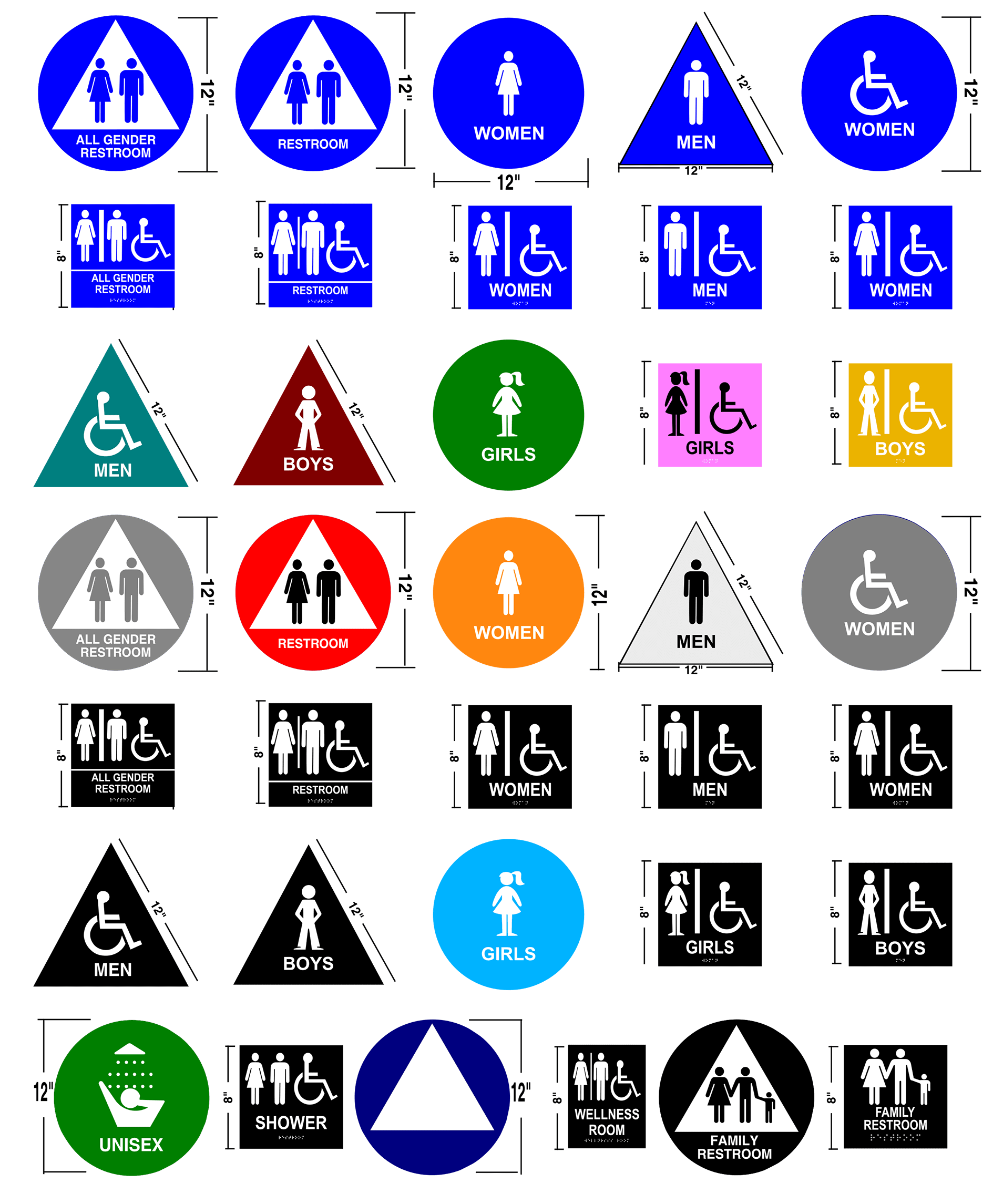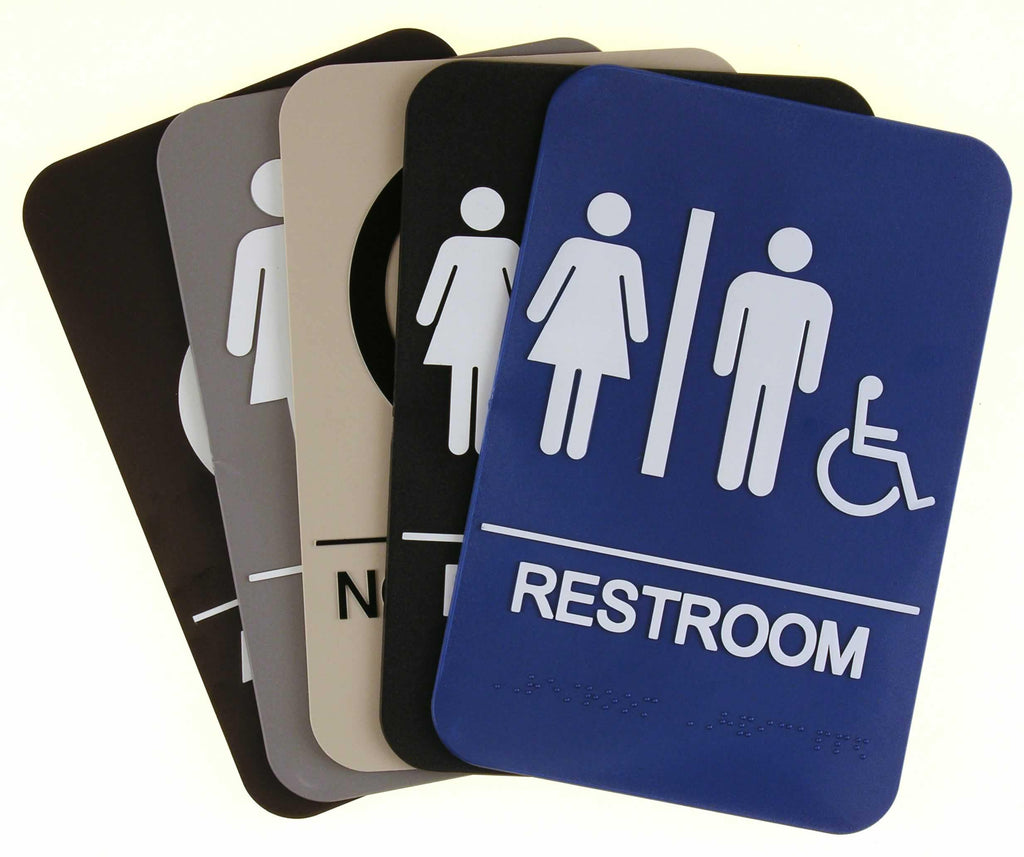ADA Signs: Making Sure Accessibility and Conformity in Public Spaces
ADA signage plays a vital role in ensuring accessibility and compliance within public spaces, considerably adding to an inclusive environment for people with handicaps. By adhering to ADA standards, signage not just helps with navigation but additionally highlights an organization's devotion to diversity and equality. As we explore the subtleties of ADA signage, from tactile attributes to design intricacies, it's critical to take into consideration just how these elements coalesce to support the rights of all individuals. What are the common pitfalls organizations encounter in keeping conformity, and how can future trends in signage continue to drive availability onward?
Importance of ADA Signs
In modern-day society, the value of ADA signage expands beyond mere conformity with legal requireds to symbolize a dedication to inclusivity and ease of access for all people. These indications are vital in developing atmospheres where people with impairments can browse public spaces with the very same convenience and independence as those without handicaps. By supplying clear and standard details, ADA signage guarantees that everybody can access centers, services, and information without obstacles.
The significance of ADA signs lies in its capability to improve the lifestyle for individuals with specials needs by promoting equal gain access to. It gets rid of the challenges that could otherwise impede their capability to take part totally in area life. These indications offer as visible indications of an organization's commitment to variety and equality, mirroring broader social worths that champion the legal rights and self-respect of all individuals.
In addition, ADA signage plays a critical role in public safety and security. By guiding individuals to leaves, restrooms, and various other vital centers, it ensures that all individuals, no matter physical ability, can evacuate securely throughout emergencies. In summary, ADA signs is not simply a regulative demand yet a powerful device for cultivating a equitable and comprehensive culture.
Key Elements of Compliance

Placement is important; indications should be set up in locations that are obtainable and conveniently noticeable. Commonly, signs must be installed between 48 and 60 inches from the ground to make sure availability for both standing and wheelchair users. Responsive components, such as Braille, are crucial for individuals with aesthetic impairments, providing critical details in a non-visual layout.
High-contrast shades in between the text and background are essential to enhance readability for people with low vision. The ADA mandates certain contrast proportions to make certain clearness. In addition, personality dimension is a vital consideration, with minimal height needs dictated by the watching distance to ensure readability from different angles.
Layout Considerations for Ease Of Access
Creating easily accessible signs requires a careful strategy to ensure it satisfies the requirements of all customers, particularly those with specials needs. The dimension of the message is equally important, with ADA standards recommending a minimum elevation based on watching range to ensure readability.
Contrasting shades between text and background are vital for presence, specifically for individuals with visual disabilities. A high comparison ratio assists differentiate the message from its history, boosting readability under numerous lights problems. In addition, responsive aspects, such as Braille and increased personalities, are essential for people that are blind or have reduced vision. These components need to be situated at a regular elevation and placement to make certain very easy accessibility and understanding.
Moreover, the positioning of signage plays a significant role in accessibility. Indicators need to be set up in places that are easily reachable and unhampered. Making certain that signs is installed at appropriate elevations and angles allows all users, consisting of those making use of wheelchairs, to interact with them properly.
Typical Mistakes to Stay Clear Of

An additional prevalent mistake is the incorrect positioning of signage. ADA standards specify specific height and area requirements to click this make certain that signs are conveniently visible and obtainable by all people, consisting of those utilizing mobility devices. Ignoring these standards not only interferes with availability but likewise risks non-compliance with lawful standards.
Furthermore, insufficient contrast in between text and background is a constant oversight. Adequate comparison is important for readability, specifically for people with low vision. Designers occasionally choose shades that are aesthetically attractive however lack the needed comparison, providing the text tough to recognize.
Last but not least, some developers fall short to integrate responsive elements, such as Braille, which are important for individuals who are blind. Omitting these features not only leads to non-compliance with ADA laws yet also restricts access for a section of the population that depends on responsive information.
Future Trends in Signage
Developments in innovation and increasing awareness of Recommended Reading inclusivity are forming the future patterns in signage design. Digital signs, for circumstances, is progressing to include interactive features and real-time updates, which can be vital in offering dynamic details in public areas.
An additional emerging fad is the use of augmented truth (AR) to enhance individual experience. AR-enabled signage can overlay electronic information onto the physical setting, offering aesthetically damaged individuals with important site auditory or haptic comments. ADA Signs. This technology not only boosts availability but likewise develops an appealing experience for all customers
Sustainability is also a considerable factor affecting signs trends. Green materials and energy-efficient illumination solutions are being prioritized to line up with international environmental goals. In addition, developments in materials scientific research are causing the development of more long lasting and weather-resistant signs.
Final Thought
ADA signs plays a vital role in guaranteeing availability and conformity within public rooms by including tactile elements, high-contrast colors, and tactical placement. The adherence to ADA requirements not just promotes secure navigating for people with handicaps but also signifies an organization's dedication to diversity and inclusivity. By avoiding common mistakes and embracing future trends, public spaces can remain to progress these worths, making certain that the civil liberties and self-respect of all people are appreciated and maintained.
ADA signs plays an indispensable duty in assuring access and conformity within public rooms, dramatically adding to a comprehensive atmosphere for individuals with disabilities. As we explore the subtleties of ADA signs, from responsive functions to create ins and outs, it's vital to think about exactly how these elements integrate to promote the civil liberties of all individuals.In modern culture, the value of ADA signage extends past simple compliance with lawful requireds to symbolize a commitment to inclusivity and accessibility for all people. By supplying standard and clear info, ADA signage makes certain that everybody can access facilities, solutions, and info without obstacles.
ADA signs plays an important role in assuring ease of access and compliance within public rooms by integrating responsive components, high-contrast shades, and tactical placement. (ADA Signs)